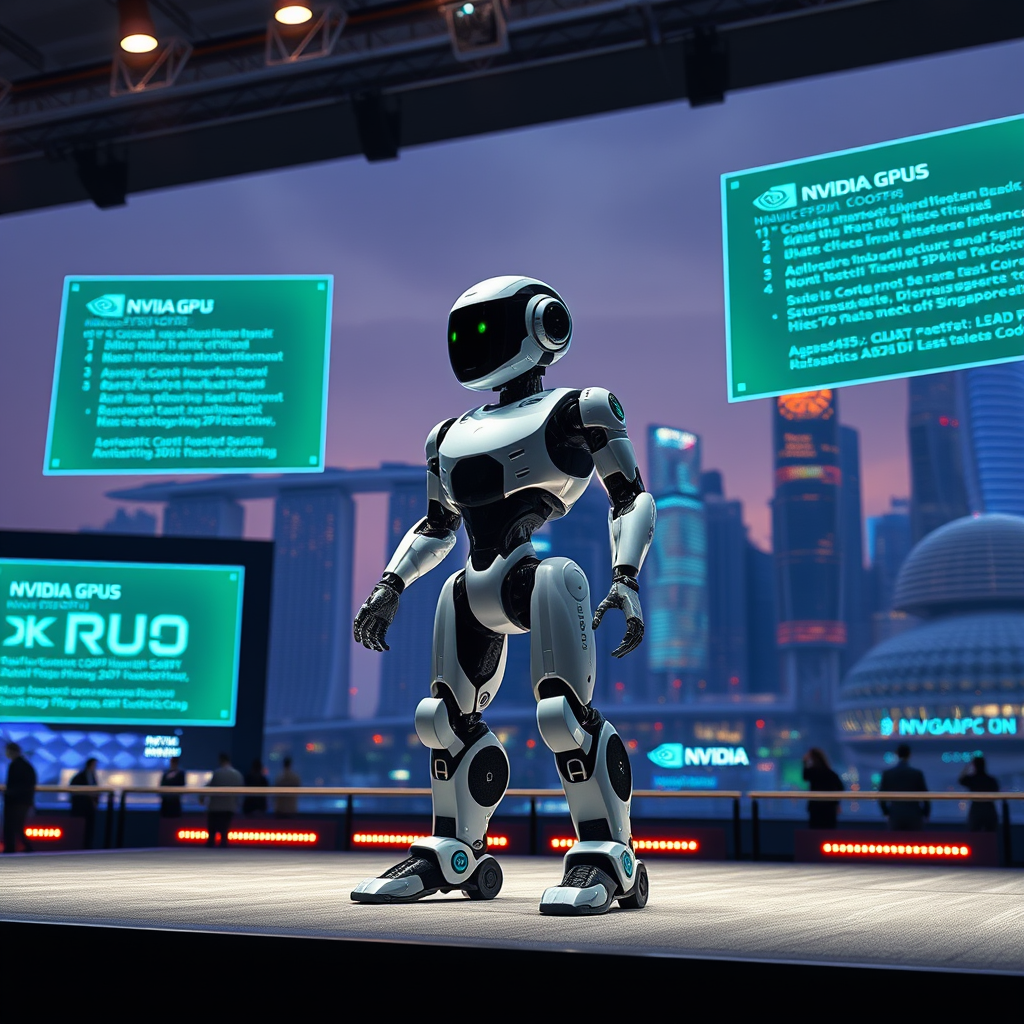
Introduction
The robotics landscape is undergoing a transformation that blends hardware innovation with software openness. At the heart of this shift lies the Robot Operating System, or ROS, a collection of libraries and tools that has become the de facto standard for building autonomous machines. In October, the global community gathered in Singapore for ROSCon 2025, a conference that not only showcases new research but also serves as a crucible for collaboration. NVIDIA, a company long associated with high‑performance computing and artificial intelligence, used the event as a platform to announce a series of partnerships that promise to accelerate the development of next‑generation robots.
Main Content
NVIDIA’s Strategic Vision for Open Robotics
NVIDIA’s involvement in robotics is not new; the company has supplied GPUs that power simulation environments, perception pipelines, and deep‑learning inference engines. What distinguishes the latest announcement is the emphasis on openness. By aligning with the Open Source Robotics Alliance, NVIDIA signals a commitment to ensuring that the tools it develops remain accessible to researchers, hobbyists, and industry players alike. The alliance, which brings together a diverse set of stakeholders, provides a governance framework that balances innovation with community stewardship.
Collaborative Projects Unveiled at ROSCon
During the conference, NVIDIA revealed several joint initiatives. One of the most ambitious is a shared repository of GPU‑accelerated ROS packages that can be integrated into existing robot stacks with minimal friction. These packages cover a spectrum of functionalities—from real‑time SLAM to multimodal perception—allowing developers to prototype complex behaviors without reinventing low‑level optimizations.
Another highlight is a partnership with a leading robotics manufacturer that focuses on autonomous warehouse solutions. By embedding NVIDIA’s inference engine directly into the robot’s on‑board computer, the manufacturer can achieve higher frame rates for object detection while maintaining energy efficiency. The collaboration also includes a joint effort to standardize data formats, which is critical for interoperability between different hardware vendors.
Impact on the Robotics Ecosystem
The ripple effects of these collaborations are already evident. Academic labs that previously struggled to keep up with the computational demands of deep‑learning models can now leverage NVIDIA’s pre‑built kernels, reducing development time from months to weeks. Commercial enterprises, on the other hand, gain access to a vetted set of tools that have been rigorously tested in simulation and real‑world scenarios.
Moreover, the open‑source nature of the projects ensures that improvements made by one group can benefit the entire ecosystem. For instance, a new sensor fusion algorithm developed by a university research team can be packaged as a ROS node and immediately adopted by a startup building delivery drones. This level of cross‑pollination accelerates the pace of innovation and lowers the barrier to entry for smaller players.
Challenges and Future Directions
While the benefits are clear, the path forward is not without obstacles. One of the primary challenges is maintaining performance parity across a wide range of hardware configurations. NVIDIA’s GPUs are powerful, but many robots still rely on embedded processors that may not support the same level of parallelism. Addressing this gap will require continued collaboration between hardware vendors and software developers to create lightweight, yet efficient, implementations.
Another concern is the sustainability of open‑source projects. As the community grows, governance structures must evolve to manage contributions, resolve conflicts, and ensure that the codebase remains secure. The partnership with OSRA is a step in the right direction, but ongoing engagement from all stakeholders will be essential.
Conclusion
NVIDIA’s recent announcements at ROSCon Singapore mark a pivotal moment in the evolution of robotics software. By championing open frameworks and forging strategic alliances, the company is helping to democratize access to cutting‑edge technology. The resulting ecosystem—characterized by shared resources, standardized interfaces, and rapid prototyping—positions developers to tackle the most ambitious challenges in autonomous systems. As the field continues to mature, the synergy between hardware acceleration and open‑source collaboration will likely become the cornerstone of future breakthroughs.
Call to Action
If you are a robotics developer, researcher, or enthusiast eager to stay at the forefront of the industry, now is the time to dive into the newly released NVIDIA‑powered ROS packages. Explore the documentation, experiment with the sample projects, and contribute your own enhancements to the community. By participating in this collaborative effort, you not only accelerate your own projects but also help shape the future of robotics for everyone. Join the conversation on the OSRA forums, attend the upcoming workshops, and let’s build the next generation of intelligent machines together.
